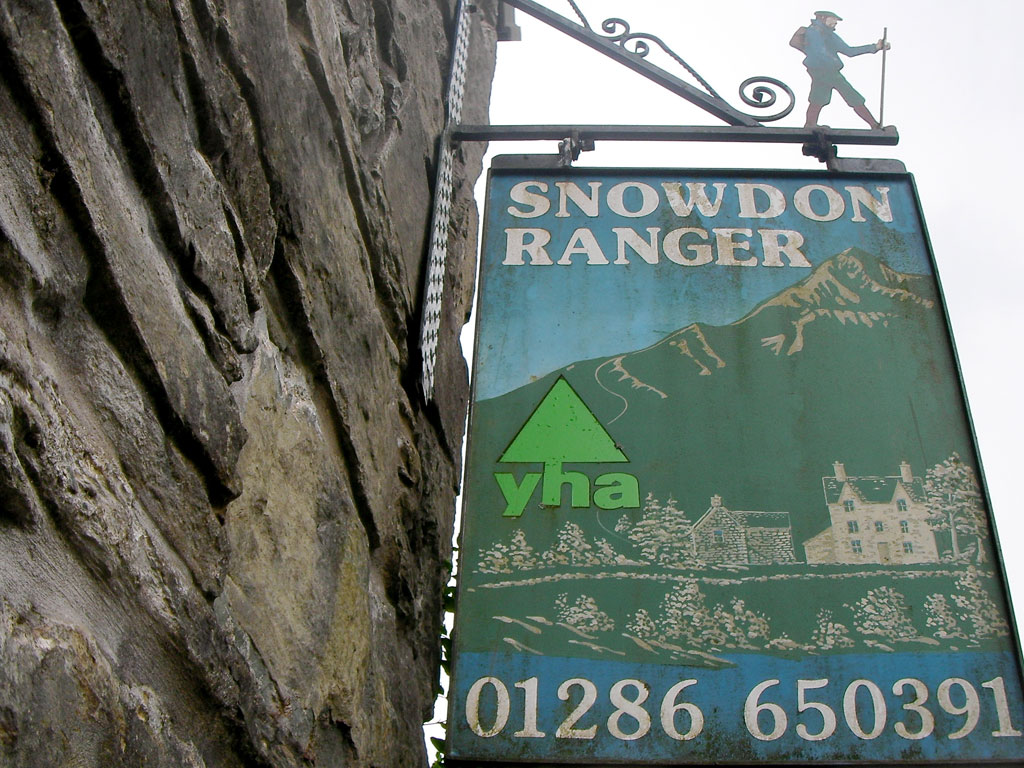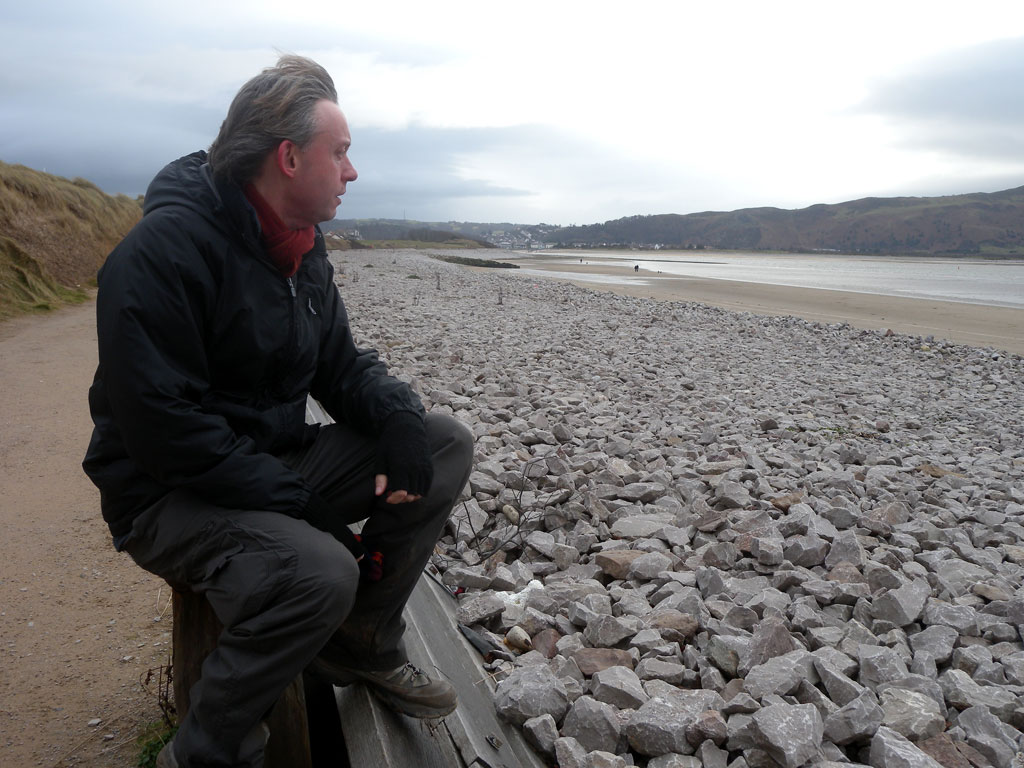
* I’m sick of winter. But the first daffodils are in flower in the park I can see from my window, so let’s hope this is the last winter story for a while.
Follow me on Twitter, or subscribe to the RSS, for weekly updates from my travel-writing archive in the months to come.
Psst. Keep this one between us, right?
Those people following the ant trail across North Wales in summer, well, they got it all wrong.
Of course they will find the Snowdonia National Park (eryri-npa.co.uk) is stunning in August and the infrastructure geared towards the Great British holiday, but they’re all missing the chance to see Snowdonia during the best month: February.
No, really. The roads are quieter, the scenery more striking, the wood-burning fires cosier, the Penderyn whisky tastes smoother and the tradition of Welsh hospitality even more relaxed.
If you’re looking for walking, scenery, fresh air and homely, unfussy places to stay and eat this winter, then beat the crowds by a good six months and bag the best of Snowdonia by going off season.
“Snowdonia is beautiful with the snow on the tops,” says Jacky O’Hanlon, a walking guide and owner of the Coed Cae B&B (CoedCae.co.uk) on the Mawddach Estuary.
“When the bracken dies down and the trees shed their leaves, you can really see the ancient stone circles and standing stones that give Snowdonia its strong sense of Welsh identity and folklore.”
National park
Snowdonia was Wales’ first ever national park, formed in 1951 to protect the natural environment, particularly around Mount Snowdon, the highest mountain in England and Wales at an altitude of 3,560 ft (1,085m).
Today it remains the largest park in Wales and is characterised by the diversity of its landscape: 15 mountain tops over 3,000ft, 23 miles of stunning coastline, glistening lakes, cascading waterfalls and ancient woodland can all be found within the park’s 823 sq miles in northeast Wales.
It also remains hugely popular with some 11m visits each year according to the Snowdonia Society (snowdonia-society.org.uk).
Last summer Snowdonia was more popular than ever with the unveiling of two major new tourism projects in the region.
The Welsh Highland Railway (festrail.co.uk) was first opened in 1923, connecting the slate and mineral quarries that dominated a then industrialised North Wales. Volunteers saved the decaying track in 1997 and, six years and £30m later, a new 20-mile section from Caernarfon to Beddgelert is back in coal-powered action.
It’s a gloriously scenic route that cuts a swathe through the rural heart of the national park. The final seven-mile section to Porthmadog will open autumn 2010, joining up with the 13-mile-long Ffestiniog Railway route from Porthmadog to Blaenau Ffestiniog to form the longest narrow-gauge railway in Europe.
The unveiling of Hafod Eryri, the low-rise, granite-built visitor centre and cafe atop Mount Snowdon, proved more controversial, however.
The new centre replaces the well-worn original summit building from 1935, designed by Clough William-Ellis of Portmeirion fame, which Prince Charles once famously described as “the highest slum in England and Wales.”
But the delayed opening has given way to grumbles about queues, a cafe that rapidly runs out of stock and a dearth of locally sourced materials.
The Snowdon Mountain Railway (www.snowdonrailway.co.uk), a feat of Victorian engineering, is the lifeline to the summit for supplies. Some of the original 1896 steam engines still complete the five-mile climb in around one hour. They transport 140,000 passengers each year, a further 250,000 people walking up one of the six trails to the summit of Snowdon.
Most take the longer but more moderate Llanberis Path, a10-mile round trip, running beside the railway track. Hafod Eryri is now closed until the snow clears, while the Snowdon Mountain Railway starts a limited service from mid March.
Snowdonia remains a hub for activity seekers off season with rock climbing, white-water rafting, mountain biking and pony trekking all popular pursuits. Two perennial walking festivals, one based around Barmouth and one centred on Betws-y-Coed, bring in the Gore-Tex and hiking boots brigade en masse.
The landscape is free to enjoy and yearns to be explored with clumps of yellow-flowered gorse, frothy, gurgling brooks, mossy bridges and isolated, grey-stone cottages cowering stoically below the mountainous slate runs of the hillsides.
Never mind if a sheep absent-mindedly wanders across the trail. Just stop and admire the ospreys or red kites circling overhead instead.
Heritage sites
For gentler excursions, the coastline features a World Heritage-listed chain of medieval castles (cadw.wales.gov.uk) with Caernarfon and Harlech within the national park, while Conwy and Beaumaris are within a short drive.
Exploring the nooks and crannies of the fairytale, Italianate village of Portmeirion (portmeirion-village.com), meanwhile, reveals another side of Snowdonia devoted to art, architecture and aesthetics.
Of all the places to base yourself, tiny Beddgelert is probably the most picture-postcard striking village in the national park. Built around an ivy-coated bridge, it positively oozes bucolic charm from between the stone cottages and flourishes of wild flowers.
It’s also home to one of North Wales’ favourite folk tales, the story of Gelert, the faithful hound of the 13th-century Welsh prince, Llewellyn.
The prince killed his beloved dog believing him to have savaged his baby son. In fact, the blood-splattered hound had saved the child from a wolf. Gelert’s grave, located along a gentle riverside stroll and marked with a stark statue, is now a site of minor pilgrimage.
Betws-y-Coed and Llanberis are the main hubs for visitors, but the former looks rather unloved these days, while the latter is increasingly the domain of coach parties and window shoppers marveling at the inordinate number of outdoor shops lining the main drag, Holyhead Road.
For a more grass roots taste of Snowdonia life, therefore, consider heading towards the south of the park and making your base around Dolgellau.
This imposing, stone-build market town, enclosed by looming mountains, feels properly Welsh – as it should for a region whereby around 65% of people speak Cymraeg as their first language.
Walkers love Dolgellau for the nearby trails to the summit of Cader Idris (2929ft, 893m), the lesser-known alternative to Mount Snowdon, while savvy mountain bikers flock en masse to Coed y Brenin Forest Park (forestry.gov.uk/wales) for some of the best biking trails in the UK. Better still, access to all the trails and facilities is, once you’ve paid for parking, completely free.
“Winter is when the panoramas open up. I love the coolness of the air, the flocks of siskin and the fallow deer, and the views across the park, especially from Moel Hafod Owen on the Volcano Trail, the highest part of the park at 1430ft (435m),” says the park’s Recreation Ranger, Graeme Stringer.
“The Family Cycle Trail is also particularly spectacular at this time of year as the high rainfall means the waterfalls are at their best.”
Compared to the rugged Gwydyr Forest, another Forestry Commission Wales site near Betws-y-Coed, Coed Y Brenin is a more multi-purpose centre, its 9,000-acre extent including a visitor centre, seven mountain biking trails, a new geo-caching trail and a series of colour-coded walking trails, some of them accessible by wheelchair and pushchair.
A brand new high ropes facility from Go Ape (goape.co.uk) opens Easter 2010 and a junior version of the course is planned for 2011.
Foodie favourites
Aside from activities and heritage sites, Snowdonia is also winning over a new generation of fans for its burgeoning food scene and boutique accommodation.
Wales has made great leaps in terms of quality since the dark days of Seventies surly B&B owners and the formica tablecloths. Snowdonia is one the regions to propel the momentum forward.
Places like Ffynnon in Dolgellau, Castle Cottage in Harlech and Plas Tan-Yr-Allt near Tremadog have brought boutique-style accommodation to the region without loosing the warmth of the local welcome. The restaurant Mawddach, The Purple Moose microbrewery in Porthmadog and upscale cafe Plas Derwen in Betws-y-Coed all fly the flag for the excellent local produce, such as beef, lamb, cheeses, ales, cockles and lava bread.
A recent addition to the roll of honour is Graig Wen (graigwen.co.uk), a triumvirate of B&B, yurts and holiday cottages with a rock-music motif in the southern Snowdonia.
Owner Sarah Heyworth is a convert to exploring Snowdonia off season. She says: “The variety of the landscape invites different levels of engagement throughout the seasons – from the rugged uplands of central Snowdonia to the nature-filled estuary walks of the southwest.
“I love the quietness of the place in winter, the closeness to nature and getting outside to pick sloes for gin. Simple country pleasures.”
Close to nature
Snowdonia still keeps those simple pleasures alive, but it also offers an increasingly sophisticated vision of Wales. Activities are thriving, new places to stay and eat exploding across the region and new blood proudly keeping the traditions alive.
A visit in winter, away from the crowds and the traffic jams, is the best way to discover Snowdonia as a place of nature, history and harmony.
Debra Harris, chair of Discover Dolgellau (discoverdolgellau.com), a cooperate of local tourism businesses promoting the attractions of the destination year round, sums it up:
“There’s something quite ethereal about Snowdonia in winter: the light, the frost-shrouded landscape, the sense of being the only human around.”
“I find it,” she smiles, “really quite spiritual.”
* This story was first published in Countryfile magazine in 2009. Liked this? Try also A Treasure Hunt in Southern Snowdonia.
Post your comments below.



